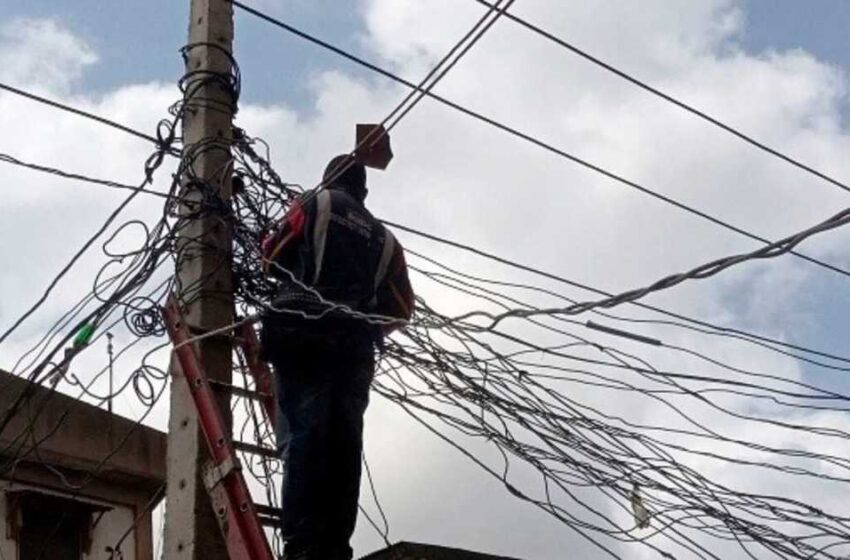Ikeja Electric, EKEDC begin 25-Day power outage — check affected areas, time, other details

Ikeja Electric, EKEDC begin 25-Day power outage — check affected areas, time, other details
Residents and businesses across parts of Lagos State are set to experience intermittent power outages as Ikeja Electric (IE) and Eko Electricity Distribution Company (EKEDC) have both announced a 25-day scheduled service disruption. The outage is to enable critical maintenance work by the Transmission Company of Nigeria (TCN) on a major high-voltage transmission line.
The planned outage will run daily from 8:00 AM to 5:00 PM, starting Monday, July 28, 2025, through Thursday, August 21, 2025, affecting several areas under both distribution networks.
TCN to Service Key National Transmission Line
According to official statements issued on Friday, July 25, both DisCos explained that the outage is due to scheduled maintenance on the Omotosho–Ikeja West 330kV transmission line—a vital infrastructure corridor in Nigeria’s national grid. This line channels power from the Omotosho Power Station in Ondo State to Ikeja West, one of Lagos State’s primary transmission hubs.
The TCN operation involves major overhaul and upgrade activities, which are expected to improve long-term efficiency and grid stability. However, during the maintenance window, intermittent power supply and load shedding are expected across the affected zones.
Ikeja Electric Confirms Scheduled Disruptions
Ikeja Electric, in a statement posted on its official social media platforms, informed customers within its franchise area that they should prepare for reduced power availability during the maintenance period.
“Please be informed that the Transmission Company of Nigeria (TCN) will carry out scheduled maintenance on the Omotosho–Ikeja West 330kV transmission line from Monday, July 28 to Thursday, August 21, 2025. During this period, customers may experience intermittent power supply and load shedding across our network due to the planned TCN outage.”
IE covers six major business units in Lagos: Abule Egba, Akowonjo, Ikeja, Ikorodu, Oshodi, and Shomolu. While specific load management schedules have not yet been released, customers are advised to follow Ikeja Electric’s official channels for updates.
EKEDC Also Affected
Simultaneously, Eko Electricity Distribution Company issued a similar notice, informing customers across its service areas—including the southern part of Lagos and parts of Ogun State (notably Agbara)—to expect service disruptions during the same period.
EKEDC reiterated that the outage is a result of the same TCN maintenance on the 330kV transmission line and warned that all districts under its coverage will be affected by load shedding and supply fluctuations throughout the 25-day maintenance window.
“We sincerely apologise for any inconvenience this may cause and kindly ask for your understanding,” EKEDC stated in its customer notice.
EKEDC’s network spans 12 districts, including:
Agbara, Ojo, Festac, Ijora, Mushin, Orile, Apapa, Lekki, Ibeju, Islands, Ajah, and Ajele.
What Customers Should Know and Do
With demand for electricity at a seasonal high, both electricity distribution companies are advising customers to:
-
Charge essential devices (phones, laptops, power banks) during off-peak hours
-
Schedule business operations around the expected blackout periods
-
Explore backup power options such as generators or solar alternatives
-
Stay informed via Ikeja Electric and EKEDC official communication channels for load rotation updates and contingency plans
Joint Impact on Lagos Power Users
This rare instance of simultaneous service interruption by both major DisCos in Lagos underscores the importance of the Omotosho–Ikeja West transmission line in powering Nigeria’s commercial capital. The shared infrastructure highlights how critical national transmission maintenance can cascade into widespread local disruptions.
Despite the temporary inconvenience, both Ikeja Electric and EKEDC have assured customers that the TCN maintenance is part of broader efforts to improve transmission efficiency and power supply reliability in the long term.


